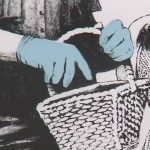Has Banksy’s prank revealed the value of creativity in business?
 By Clare Cavanagh, Reuters Community
By Clare Cavanagh, Reuters Community
A couple of weeks ago, the world watched in awe as Banksy’s most famous picture Girl with Balloon was shredded as the hammer went down at Sotheby’s London. It was sold for £1.4million.
Following the prank, it has now been renamed Love is in the Bin. According to Reuters, the anonymous female collector who now owns it said, “Gradually I began to realise that I would end up with my own piece of art history.”
And she’s right. Because a damaged piece of art that caused shock across every face in that room, and everyone that saw it in the media around the world, has suddenly increased in value due to Banksy’s creative idea that goes beyond his graffiti talent.
French auction house can only hope for a Banksy prank
What is it about the Bristol-born Banksy that makes him so popular?
His provocative stencilled artwork was first noticed in the late 1990s. Over the last twenty years, he has created engaging artworks which have had their own series, from ‘Brandalism’ to urban exhibitions to celebrity buyers.
It remains illegal for his spray-painted images to be created, but they are still cultivating interest all over the world. His own identity remains a mystery. So after two decades of him revealing his work, how do his alternative creative methods continue to draw so much attention?
Graffiti art is seen on a wall near the headquarters of Britain’s eavesdropping agency, Government Communications Headquarters, known as GCHQ, in Cheltenham, western England April 16, 2014. British media have attributed the new work to acclaimed British street artist Banksy, as a spoof on recent government spying scandals exposed by former U.S. National Security Agency contractor, Edward Snowden, who said that Britain’s agency, GCHQ tapped fiber-optic cables carrying international phone and internet traffic and is sharing vast quantities of personal information with the NSA.
In contrast, well-established companies that have relied on traditional methods have already received commendation of their own. They maintain key values in providing recognisable and reliable content and this is important.
But in order to move forward, perhaps it is worth trying to look outside the safe, habitual business box. What would happen if they dared to explore more unconventional methods and challenge those traditional ways of thinking?
A man touches the newest art installation by British artist Banksy, which Banksy’s website calls
Over the last year, we have seen big risks which have prompted big results. Since Nike made the controversial choice to feature Colin Kaepernick, the former NFL quarterback who took a knee during the national anthem in 2016 which started a movement against racial inequality and received much criticism,Nike’s market value has raised by $6 billion.
In a Guardian article last year, it shows similar brave choices that have been made in the publishing industry and have served to diversify and increase their reader bases.
All businesses succeed by maintaining a clear sense of who they are and what they stand for. While the world is changing and constantly moving forward, today is an opportunity for businesses to push boundaries and make bold, creative choices in adapting and promoting their own identities.
Like art, it’s impossible to please everyone but causing a stir which is enticing and thought-provoking will always elicit mystery and curiosity in audiences.
What are your plans for International Artist Day? Be creative, be bold, be brave!
IMAGES:
Staff from Sotheby’s auctioneers reposition Banksy’s Love is in the Bin, which is now half-shredded, in London, Britain, October 12, 2018. REUTERS/Henry Nicholls
A person, dressed as Britain’s Queen Elizabeth II, gestures during an event ahead of the anniversary of the Balfour Declaration, outside Banksy’s Walled Off Hotel in the West Bank city of Bethlehem November 1, 2017. REUTERS/Mussa Qawasma
REUTERS/Eddie Keogh
REUTERS/Shannon Stapleton
REUTERS/Henry Nicholls
For more on this story and video go to: https://agency.reuters.com/en/insights/articles/articles-archive/has-banksys-prank-revealed-the-value-of-creativity-in-business.html?utm_source=Eloqua&utm_medium=email&utm_campaign=Media%20-%2010%2030%202018%20-%20Reuters%20Community%20Newsletter&utm_content=Media%20-%2010%2030%202018%20-%20Reuters%20Community%20Non%20Connect%20Segment%20Newsletter









